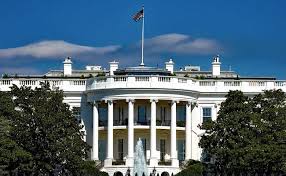Donald Trump Vows Prescription Drug Price Reform
Presidential Candidate Pledges to Equalize Drug Prices
Donald Trump, a leading candidate for president, has announced a plan to tackle the soaring costs of prescription drugs in the United States. His central promise is to issue an executive order, if elected, compelling the U.S. to pay the same prices for certain medications as other developed nations. This bold proposal aims to address the significant disparity in drug pricing between the U.S. and other countries, where government regulations often play a more active role in negotiating drug costs.
The Rationale Behind the Proposal
Trump argues that the current system unfairly burdens American consumers and taxpayers. Pharmaceutical companies, he contends, exploit the lack of price controls in the U.S. to charge exorbitant rates, effectively subsidizing lower prices in other countries. This disparity, according to Trump, is unacceptable and requires immediate action. He believes that leveling the playing field will not only save Americans money but also incentivize pharmaceutical companies to innovate and develop new treatments without relying on inflated U.S. prices.
The details of which specific drugs would be subject to this price equalization remain to be fully fleshed out. However, the focus is likely to be on patented drugs that lack generic competition. These are typically the medications where price differentials are most pronounced and where the impact on consumers is greatest. The mechanism for achieving price parity also requires further clarification. Potential approaches could involve direct negotiation with pharmaceutical companies, the establishment of a government agency to set benchmark prices, or the adoption of reference pricing models used in other countries.
Potential Benefits of Equalized Drug Pricing
The potential benefits of Trump’s proposal are numerous and could have a far-reaching impact on the U.S. healthcare system. These include:
- Reduced healthcare costs for consumers: Lower drug prices would directly translate into lower out-of-pocket expenses for patients, particularly those with chronic conditions requiring ongoing medication.
- Lower insurance premiums: As drug costs are a significant driver of healthcare spending, reducing these costs could lead to lower insurance premiums for individuals and employers.
- Reduced government spending on healthcare programs: Medicare and Medicaid, the government’s major healthcare programs, would benefit from lower drug costs, freeing up resources for other essential services.
- Increased access to medications: Lower prices could improve access to life-saving medications for low-income individuals and families who currently struggle to afford them.
Challenges and Criticisms
Despite the potential benefits, Trump’s proposal faces significant challenges and has drawn criticism from various quarters. The pharmaceutical industry is vehemently opposed to any form of price controls, arguing that they stifle innovation and discourage investment in research and development. They claim that lower profits would lead to fewer new drugs being developed, ultimately harming patients.
Another concern is the potential for unintended consequences. If pharmaceutical companies are forced to sell drugs at lower prices in the U.S., they may seek to compensate by raising prices in other countries or by focusing their research efforts on more profitable areas, potentially neglecting treatments for less common or less lucrative diseases. There is also the risk that pharmaceutical companies could retaliate by delaying or withholding the launch of new drugs in the U.S.
Legal challenges are also likely. Pharmaceutical companies could argue that price controls violate their intellectual property rights or that they are an unconstitutional taking of private property. The legal framework for implementing such a policy would need to be carefully crafted to withstand these challenges.
The Political Landscape
The issue of prescription drug prices has become a major political flashpoint, with growing bipartisan support for reform. While Democrats have long advocated for government intervention to control drug costs, Republicans are increasingly under pressure to address the issue, particularly given Trump’s vocal stance. The political feasibility of Trump’s proposal will depend on his ability to navigate the complex political landscape and overcome opposition from powerful interest groups.
Achieving meaningful drug price reform will require a comprehensive approach that addresses the underlying causes of high drug prices, including patent abuse, anticompetitive practices, and the lack of transparency in drug pricing. Trump’s proposal represents a bold step in this direction, but it remains to be seen whether it can be successfully implemented and whether it will achieve its intended goals.
The debate over drug prices is likely to continue to be a central issue in the upcoming presidential election. Voters will need to carefully consider the various proposals and their potential impact on the healthcare system and the availability of new medications. The choice of how to address this complex issue will have significant consequences for the future of healthcare in the United States.
Ultimately, the question is whether the U.S. can strike a balance between incentivizing pharmaceutical innovation and ensuring that life-saving medications are affordable and accessible to all Americans. Trump’s proposal throws this critical question into sharp relief, forcing a national conversation about the fairness and sustainability of the current system.























































Leave a Reply